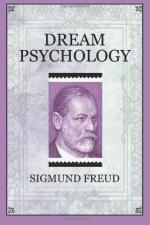The same diversity in their ways of formation and the same rules for its solution hold good also for the innumerable medley of dream contents, examples of which I need scarcely adduce. Their strangeness quite disappears when we resolve not to place them on a level with the objects of perception as known to us when awake, but to remember that they represent the art of dream condensation by an exclusion of unnecessary detail. Prominence is given to the common character of the combination. Analysis must also generally supply the common features. The dream says simply: All these things have an “x” in common. The decomposition of these mixed images by analysis is often the quickest way to an interpretation of the dream. Thus I once dreamt that I was sitting with one of my former university tutors on a bench, which was undergoing a rapid continuous movement amidst other benches. This was a combination of lecture-room and moving staircase. I will not pursue the further result of the thought. Another time I was sitting in a carriage, and on my lap an object in shape like a top-hat, which, however, was made of transparent glass. The scene at once brought to my mind the proverb: “He who keeps his hat in his hand will travel safely through the land.” By a slight turn the glass hat reminded me of Auer’s light, and I knew that I was about to invent something which was to make me as rich and independent as his invention had made my countryman, Dr. Auer, of Welsbach; then I should be able to travel instead of remaining in Vienna. In the dream I was traveling with my invention, with the, it is true, rather awkward glass top-hat. The dream work is peculiarly adept at representing two contradictory conceptions by means of the same mixed image. Thus, for instance, a woman dreamt of herself carrying a tall flower-stalk, as in the picture of the Annunciation (Chastity-Mary is her own name), but the stalk was bedecked with thick white blossoms resembling camellias (contrast with chastity: La dame aux Camelias).
A great deal of what we have called “dream condensation” can be thus formulated. Each one of the elements of the dream content is overdetermined by the matter of the dream thoughts; it is not derived from one element of these thoughts, but from a whole series. These are not necessarily interconnected in any way, but may belong to the most diverse spheres of thought. The dream element truly represents all this disparate matter in the dream content. Analysis, moreover, discloses another side of the relationship between dream content and dream thoughts. Just as one element of the dream leads to associations with several dream thoughts, so, as a rule, the one dream thought represents more than one dream element. The threads of the association do not simply converge from the dream thoughts to the dream content, but on the way they overlap and interweave in every way.
Next to the transformation of one thought in the scene (its “dramatization"), condensation is the most important and most characteristic feature of the dream work. We have as yet no clue as to the motive calling for such compression of the content.




